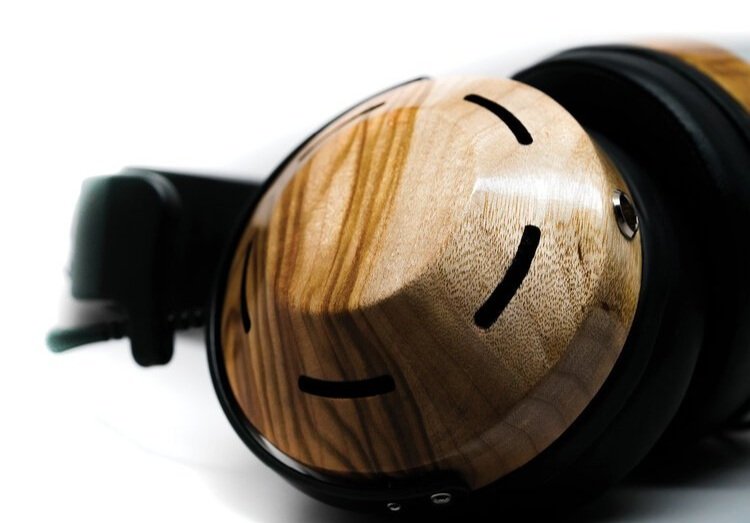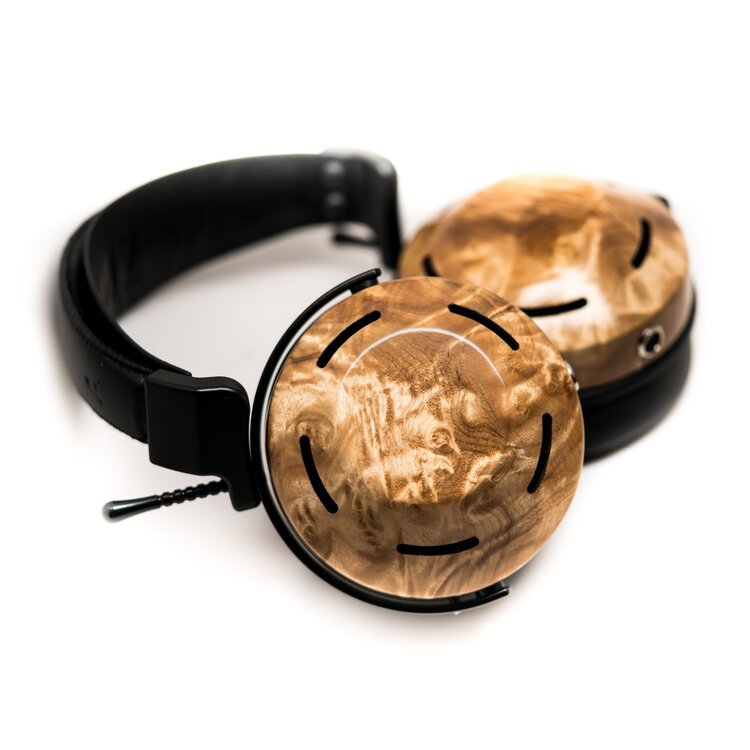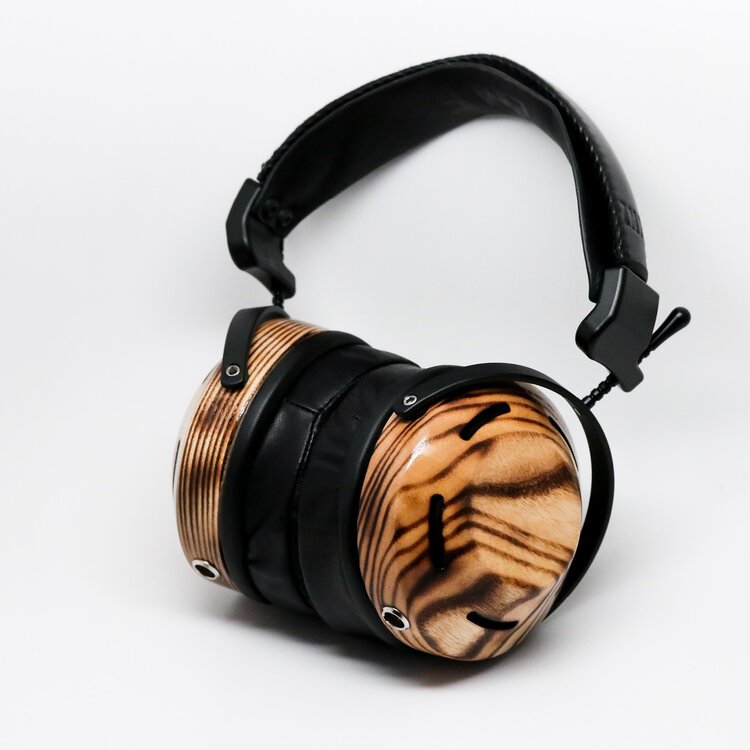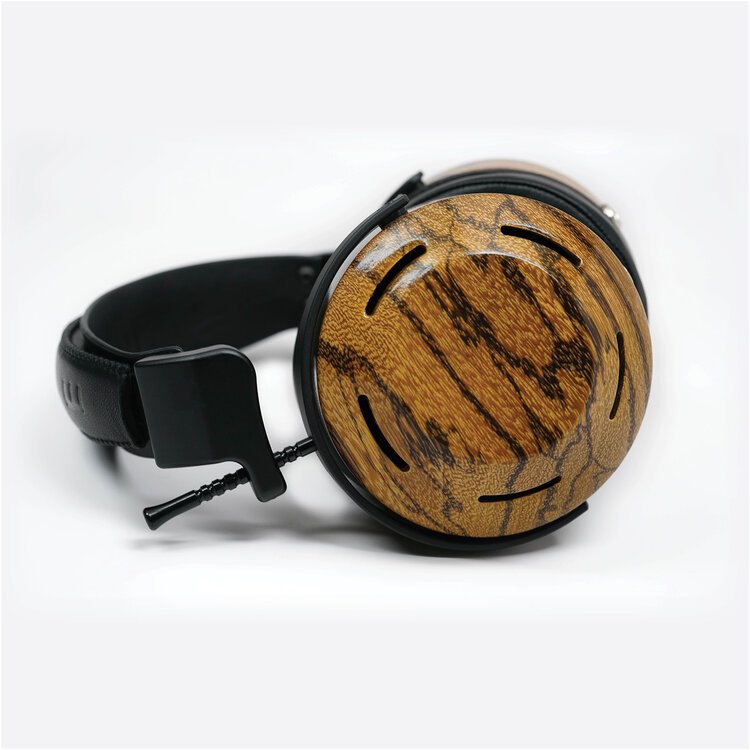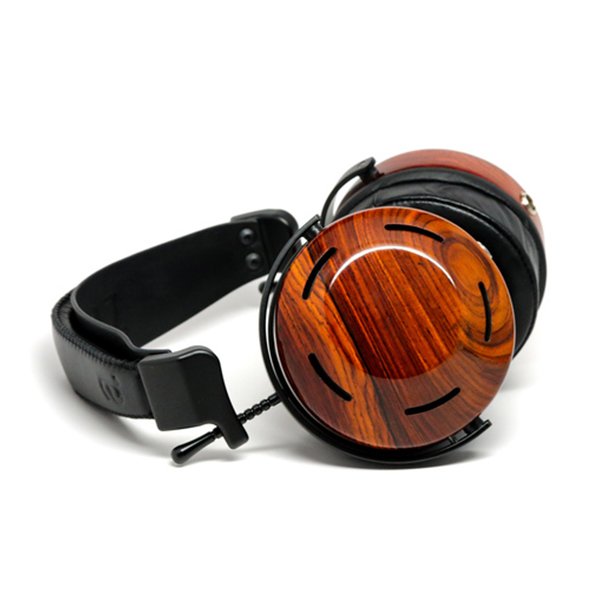ZMF ATTICUS - REVIEW
A Brilliantly Musical, Beautifully Crafted Jewel!
It was the warmth, the beguiling nature of the music that flowed from the systems of our parents or grandparents, or even great grandparents, that wed many of us to this art called audio or Hi-Fi. Music flowed freely from turntables, tubed components, efficient speakers, and later reel-to-reel players, etc. and it was rapturous, and many of us remain married to audio to this day for that very reason. Perhaps for some it represents one of the longest relationships of their lives.
Neutral? It was not a term I had ever heard in my youth. Neutral, as it has come to mean for some, bereft of warmth, suffused with detail and transparency, and supposedly true to the event. Well, I have never been to a “neutral” musical event, as there was always warmth and engagement. As for being exposed to and listening to music in my youth, I am and remain very grateful. My experiences with music, from jazz to folk to rock to, eventually, classical as a young man, were always filled with experiences that spoke to heart and soul, to body and feet.
I was quite the dancer. Perhaps there’s still a bit of that dancer left. I know that neutral would not have brought me or my feet and body to life as warmth did and continues to do. So thanks mom for that Garrard turntable, that Yamaha receiver, those unmemorable, homemade speakers, made by a cousin, and the many jazz and blues and soul and rock records.
And into my life steps the ZMF Atticus, and with them smiles and fond remembrances and chair dancing, then dancing, and even singing returns. “Can a headphone do this,” you ask? Absolutely! What then about the ZMF Atticus headphones (their name made real to me by the character of the book and then the movie To Kill a Mocking Bird —Atticus Finch)? They are a true revelation.
I asked Betty and Zach for the Who, What, When, Where, and Why of ZMF and their response, graciously provided, is below:
“We are a husband and wife team. Zach, my husband, began ZMF as a hobby business modding T50RP headphones. Since that time we have slowly grown over the years and now create completely proprietary headphones (not mods). We have a workshop in Berwyn, IL where we work with our team of highly trained technicians to produce our 6 models that are centered around 3 different driver materials (an open and closed headphone for each). Our passion for wood came from owning, building, and playing acoustic instruments and a desire to translate that experience of pride of ownership, heirloom construction, and the exciting properties of wood ( namely density) into our headphone builds.”
From the time I received the ZMF Atticus, across the process of its review to completion, to finding out more about Betty, Zach and ZMF, well, I’ve become a huge fan. A fan of their old school ways of “built-to-last, high-quality workmanship, their abiding concern for the customer, their passion for the music, and the ethos which wraps this all in a beautiful, old-school envelope of integrity.
REFRAIN: Unlike most reviews, this review will be non-sequential, as it will start with how the equipment actually sounds and not the process of physically “undressing” it and/or laying out its various accoutrement, specifications, etc. Think of this review then, as a non-linear movie—Memento, Kill Bill, Pulp Fiction, Eternal Sunshine of the Spotless Mind, The Queen’s Gambit, In the Shadow of the Moon, etc—that, likewise, starts at the end and winds its way to the beginning.
The Sound
There is a tactile realism that the Atticus conjures and a wondrous transparency that lifts detail across broad swaths of recorded music. Add to this a seductive warmth and an energetic, chair-dancing character and the experience is, for some very brief moments, hauntingly reminiscent of an electrostatic headphone. And this for a dynamic headphone is a great and yet a rather perplexing feat. How can this be? Associated gear? Hmmmm…?
It is often thought that a headphone which embraces a warmth, perhaps analogous to Frederic Leighton’s “Flaming June” painting, is bereft of transparency, unable to resolve fine detail or to find and lift from their deep burrows the myriad microdynamic and spatial cues that coalesce to make music real. The Atticus proves this a fallacy, a canard, an old wives’ tale, as it does just that.
I listened to, literally, every genre of music that I could with the Atticus, all of which it served well, and it never failed to evoke chair-dancing, soulful reflection, remembered moments of treasured first listenings—Miles, Cat Stevens, Donny Hathaway, Coltrane, Monk, the Beatles, Archie Shepp, Nina, Jefferson Airplane, War, etc. The Atticus brought it all and then grabbed me by the collar and made me listen! I would sit and listen for hours unable to take notes, which unfortunately stacked up the review queue weeks away from the magazine’s deadline. Drats! But in a very good way, as every single moment with the Atticus was enjoyable! Every. Single. Moment. This in and of itself is an astonishingly rare experience, as I believed myself cynical and jaded with regard to dynamic headphones. Not so apparently.
If you like opera or choral or jazz or blues or rock or any genre, really, don’t expect to listen with the ZMF Atticus and do or concentrate on anything else but the music. I listen, as I attempt to write, to Archie Shepp’s Left Alone Revisited and I’m trying to remember when the texture of his horn was this real, natural, this close, this three-dimensional. Electrostats!
Blown away! Yep, this about sums up my experience with the ZMF Atticus from beginning to end, or in other words—unerringly musical, incredibly transparent, able to resolve detail with one pass, with a richness and saturation of tone/timbre that brought to life music from sunup to sundown. Kudos to the engineer/designer!
The ZMF’s volumetric cube—sound stage—is vast and encompassing and yet it can be very intimate when called to be so. The Atticus’ sound-staging, its front to back layering, its right to left imaging/positioning, its separation are spectacular! This is yet another aspect for which the Atticus seemed to touch down, if but for a moment, on the far boundaries of electrostatic headphones. Far more expensive dynamic and planar headphones have been unable to compete with the Atticus on this metric! Amazing!
The ZMF Atticus was partnered with the Enleum AMP-23R (review coming) as aligned to the DENAFRIPS Pontus II and a MacBook Pro, the Mola Mola Tambaqui DAC as a balanced headphone amplifier, and the Astell&Kern SE180 DAP. Cabling was ANTICABLE. Power conditioning was handled by the AudioQuest.
Bass
Thunderous. Impactful. Startling. Propulsive. The sub-bass of the Atticus resounds powerfully with a weight and gravitas and rumble that I could not have anticipated, given my prior research. And never does its potent bass cast a shadow over resolution or clarity or detail. Dramatic are the massed tympani across Eiji Oue’s V. Infernal Dance of King Kashchey (Stravinsky, Reference Recording), as they thunder in on cue to punctuate this movement time and time again. The Atticus was easily able to reach the Holy-Bass-Head-Grail, though there is little doubt that the DENAFRIPS Pontus II and the Enleum AMP-23R and the AntiCable wires were all complicit in this achievement. The importance of component matching. Enter Christian McBride’s “Fat Bach and Greens” (Conversation with Christian, Mack Avenue Records) and it’s on! Bass and violin conspire in a rip-roaring ruckus, that pit Jazz and Classical in a dichotomous dance of call-and-response. The Atticus is a deft operator at portraying this dance of bass and violin as a natural, beautifully resolved, and energetically motivating, toe-tapping frolic.
Midrange
Natural. Corporeal. Center-Forward. Icelandic Poet Einar Georg Einarsson of Olafur Arnalds’ “Árbakkinn” (Island Songs, Mercury (Universal France)) is less than several feet away as he recites, and it has rarely been more real and less a simulacrum, as the weight and richness of his baritone voice are truly corporeal. Yes, there is warmth and gorgeously so. It is a warmth that would have resonated well with our parents and our grandparents as something very familiar, tactile. And the birds, who sing directly outside of the performance studio, that can sometimes be heard at the very beginning of the song though often not (equipment dependent), are present and well resolved and clear. Olafur’s piano is rich, textured, resonant, and though there is good weight to its notes the resolution is superb, and never does it diminish the clarity of the violins or the cello or the viola. Yes, the Atticus brings a richness of note and tone and a fleshing out of texture that is glorious, and yet, it is supported by a foundational transparency that allows for wondrous detail. Voices8 “Prayer to a Guardian Angel” (Lux, Decca) cues and the soundstage is vast and transparent, offering both great clarity and emotion. The timbre of the harp leaves no guesswork, as can sometimes be the case with a less than proficient system or set of headphones. The voices of the choir are distinct, engaging, and it is apparent that the ZMF Atticus is itself in love with the human voice, so extraordinary is its portrayal. The Atticus might well be the combination of several previously reviewed headphones, so apt is it at pressing all of the triggers of an outstanding performance, time and time again.
Treble+
Vilda Frang’s “Allegro Molto” (Veress: String Trio - Bartók: Piano Quintet, Alpha) is energetic, visceral, and wonderfully textured via the Atticus. It is also dynamic, with a cat-like transient quickness that darts from knuckle raps to plucks to drumming upon violin or cello to bowing, with tone/timbre and resolution intact and true. Speaking of tone and timbre they were consistently quite delicious, supremely satisfying with the Atticus in tow. On this track the width and depth and positioning across the soundstage was outstanding, as constructed by exceptional detail retrieval, an ocean of microdynamic cues, and a ‘refined nuance,’ an ease, if you will, that stood simulacrum on its head in favor of a decidedly corporeal presentation. On Dave Brubeck’s “Take Five” (Time Out, Columbia-Legacy) the resolution and pristine clarity of the drums, cymbals and the air about them was Top-of-the-Line (TOTL) phenomenal! There was no “schhhhhchh” posing as the sound of cymbals but the real thing, while drumsticks, drum-skins, and kick drum brought forth the tonal resonances of surface tension as well as the sound waves traveling within the sealed drums. And there was always an energy, a vibrancy to the music when such was called for. Outstanding!
The Wrappings and Accessories
The ZMF Atticus comes in a black, tank-like case, that feigns a toughness that almost dares you to drop it from a tall building. But don’t do that! After all, what does a case know. Nonetheless, it is substantial in the extreme.
However, the drama begins upon opening the case to the aromatic smell of the Camphor Burl wood fragrance that rises from the Seahorse SE 430 enclosure. This will immediately beguile one’s senses. Got aromatherapy? Yes, sireeee! And then there is the Heirloom beauty of the Atticus headphones that stares back in so alluring a way, that breaking up with them—sending them back to Bevin (Betty) and Zach—even before hearing them, seemed an impossibility. However, after hearing them it becomes a stark impossibility.
Absolutely beautiful, regal, incredibly well executed and a direct affront to well-heeled headphone manufacturers, many of whom have not matched what this Mom&Pop headphone concern—ZMF—has done with style, class, technological know-how, and old-school integrity that is truly inspiring! Bravo!
Design—Look, Feel, and Technology
The ZMF Atticus bears an incredible natural beauty that needn’t apologize for itself to any headphone, regardless of price. It is not ‘bling,’ as bling is ephemeral, passing quickly out of fashion and into disregard. The Atticus is, indeed, an heirloom quality component as so described by ZMF. Rare is the manufacturer’s claim that holds so true, but in this case the claim is genuine and bona fide. Suffice to say, that pictures do not do justice to the ZMF Atticus, much like pictures of incredible art rarely if ever do justice to the originals.
The hardened, utilitarian, Seahorse SE 430 case has been provided to make sure that the heirloom component contained within finds its way intact to one’s heirs. And their heirs…
In sum, the Atticus embodies a superb natural beauty and elegance that may temporarily summon shock-induced catatonia as you stare back at what was not expected. And when that Camphor Burl wood aroma hits you, “Watch Out!” It is aromatherapy in the quick and it is incredibly relaxing and you will never want to let them go!
Technology and Specification
ZMF ATTICUS
Type: Closed-back headphones w/TPE driver membrane
Wood type: Camphor Burl
Impedance: 300 Ohms
Sensitivity: 99dB SPL / 1mW @ 1kHz
THD: 0.1% @ 1kHz / 100 dB SPL
Frequency response: 10Hz–25kHz
Weight: 490g
Cables provided: 1 x ZMF Stock
Carrying case: Seahorse SE 430
Warranty: Lifetime for Drivers/2 Years Parts and Mechanical
Conclusion
Absolutely gorgeous in aesthetic, prodigiously musical, mesmerizingly transparent, offering an immensity of soundstage second to very, very few. And then there is its beguiling camphor wood aroma, that rises from its hardened Seahorse case that entrances the senses. The collective experience is, perhaps, what sailors might have encountered in their ensnarement as they listened to the otherworldly voices of the Sirens en route to home or plunder. In this case, however, one is not lured to the sharp, jutting rocks, and to one’s doom. Instead, there is an undeniable bliss that music lovers will find compelling in a rather magical, profound, and otherworldly way. The Atticus represents an adventure that must be experienced. Must.
I had heard and read good things about the ZMF Atticus, but I was not prepared for what actually transpired, the music that was rendered, the visual aesthetic and aromatic experience. Perhaps being so long in the electrostatic camp left me cynical of all things not electrostatic. The ZMF Atticus has served as the perfect cure to that cynicism.
The Atticus, undeniably, plays to the skill and abilities of its partnering components. Partner it with a Top-of-the-Line DAC, headphone amplifier, integrated (as I did), and it will stand toe to toe with all comers and exhibit skills and abilities more closely related to another type of headphone altogether. Should you, however, partner the Atticus with lesser components, what you will hear are the limitations of those components and not the Atticus. Though even in this respect it will lift all boats.
The ZMF Atticus represents not only the lowest priced headphone but the lowest priced component to receive our GOLDEN KEYNOTE Award, not that price should ever be a determining factor. Nonetheless, this is direct testament to its incredible value, relative to far more expensive headphones, and its ability to thoroughly deliver all that is required for one to absolutely and thoroughly enjoy one’s musical fare. Bravo!
Pros: Musicality, transparency, dynamics, sound staging, imaging, the incredible beauty of the music delivered, Camphor Burl wood fragrance, the Seahorse case
Cons: None.
THE SYSTEMS
1.
Roon Nucleus+
MOLA MOLA Tambaqui
ENLEUM AMP-23R
MEZE EMPYREAN
ROSSON AUDIO RAD-0
ZMF ATTICUS
AUDIENCE FRONT ROW CABLES
TORUS RM20
2.
Roon Nucleus+
DENAFRIPS Pontus II
LTA Z10e
MEZE EMPYREAN
ROSSON AUDIO RAD-0
ZMF ATTICUS
AUDIENCE FRONT ROW CABLES
TORUS RM20
2.
MOLA MOLA Tambaqui DAC as Headphone Amplifier
4.
ASTELL&KERN SE180
The Company
ZMF
ZMF Atticus ($1099.99)
www.zmfheadphones.com
contactZMF@gmail.com
